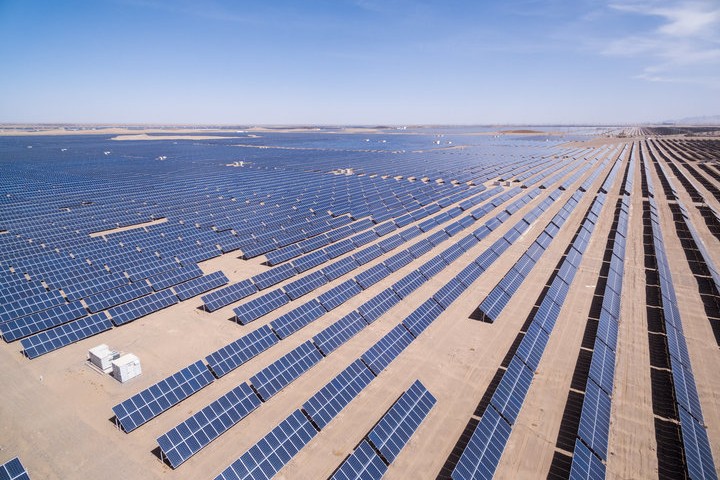China’s Renewable Energy Success Embarrasses Trump’s ‘Energy Dominance’ Plan

China’s Qinghai province is larger than Texas — that is to say, bigger than Kenya, Sweden, France, Morocco, Japan, Poland or the Philippines. And with almost six million people, it has a larger population than 30 states — more than Colorado, Minnesota, South Carolina, Connecticut or Arkansas.
So it is a big deal that for a week in June, Qinghai ran its electric grid entirely on water, wind and sun. One hundred percent renewable — no coal, oil or gas.
This was a salutary reminder that even as President Donald Trump backs the U.S. out of the Paris Accord and into the 19th century, progress is continuing apace elsewhere. In fact, progress is accelerating — some truly good news amid the ongoing trauma of climate change. Just last month, huge floods and record drought, which are worsened by climate change, hit different parts of China.
A decade ago, people would have thought such a demonstration of renewable energy impossible: sun and wind were simply too expensive for mass use, still the plaything of environmentalists. But this new milestone serves as a reminder of just how much good work the engineers (many of them Chinese) have done in the intervening years. Solar power is now the cheapest way to generate electricity across most of the world, especially if you build giant solar farms (the Longyangxia Dam Solar Park in Qinghai is the world’s largest). With each passing month, solar energy gets cheaper — it’s in the sweetest spot on the cost curve, where we’re learning with each new batch of panels how to make them more efficiently.
As Trump backs the U.S. out of the Paris Accord and into the 19th century, progress on renewables is continuing apace elsewhere.
Even half a decade ago, people would have been worried: What would happen if the sun went down or the wind didn’t blow? Storage has always been renewable energy’s weak spot. But now the price of batteries is falling at the same remarkable pace, and again China is near the front of the pack — which means that you can make electrons when the sun shines, and you can store them away for when night falls. The charismatic American entrepreneur Elon Musk is building what could be the world’s largest battery factory in Nevada, but by the time he’s done in 2018, uncharismatic Chinese firms with names like Tianjin Lishen Battery Joint-Stock Co. will be building as many gigawatts worth of the technology.
1. China is serious about leading the world in renewable energy.
That’s good news: the underlying fear of much of the climate debate has been that China, and then India, would linger in the fossil-fuel era long enough that their emissions would push the planet over the edge. But now they both seem set to dramatically outperform their Paris pledges. Right around the same time as Qinghai’s milestone, Coal India, the world’s largest coal company, announced that it would close many of its mines — the price of solar power was just too low to compete.
2. The rest of the world can sign up for 100 percent renewable too, and much sooner than many people imagine.
Indeed, it’s the number on everyone’s lips: dozens of American cities (Atlanta, Salt Lake City, San Diego) pledged this year to go 100 percent renewable. Senators Bernie Sanders (I-Vt.) and Jeff Merkley (D-Ore.) have sponsored federal legislation that would commit the entire U.S. to such a move by 2050; the state Senate in California passed a similar measure with a 2045 timeline. Groups like Food and Water Watch have urged that we get there by 2035; Climate Mobilization has said let’s do it inside a decade; activists in Los Angeles, at a press conference with Naomi Klein last month, called on the city to make the leap by 2025. None of it will be easy, but it’s at the outside edge of possible: we can build enough factories that in turn will produce enough panels and turbines — but only if we push.
For the moment, it’s Beijing and not D.C. that’s setting the pace.
3. Whoever pushes fastest will win the prize.
This is the planet’s single greatest economic transition. In a matter of years, we have to accomplish the kind of energy transition that in the past (from wood to coal to oil) took half a century.
For the moment, it’s Beijing and not D.C. that’s setting the pace.
In Washington, just as Qinghai was setting its new mark, U.S. “energy leaders” were convening in the nation’s capital for a series of meetings designed to guarantee “energy dominance” by drilling for more oil. The contrast could not have been greater — and it wasn’t very hard to tell who was on the right side of history.
Source:huffingtonpost.com
